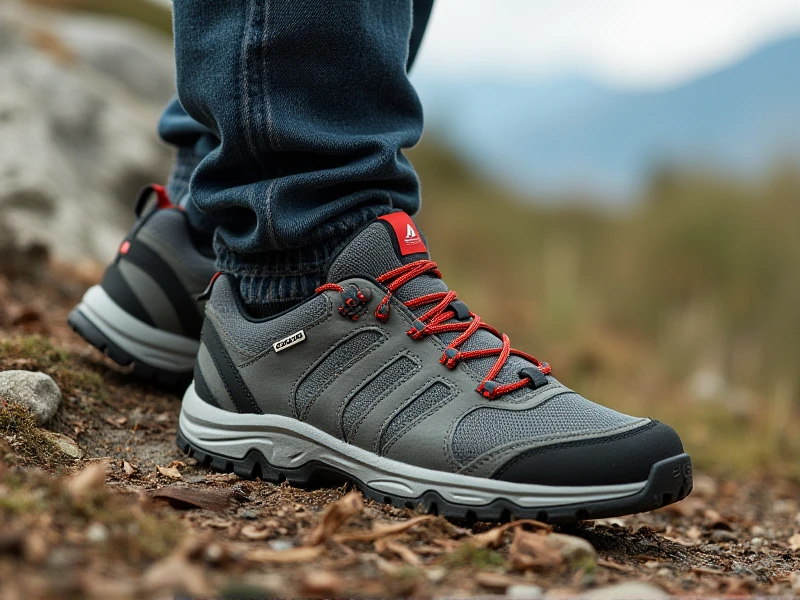
Finding Your Trail Stride: The Complete Guide to Men's Hiking Shoes
Hitting the trail demands reliable footwear. For men seeking adventure beyond paved paths, choosing the right hiking shoes is fundamental. This guide explores essential features, considerations, and key benefits to help you find the perfect pair of men's hiking shoes for your next outdoor excursion, ensuring comfort, safety, and performance mile after mile.
Understanding Terrain and Stability
The best men's hiking shoes match your typical terrain. Tackling rocky mountain ascents requires significantly more ankle support and aggressive tread than strolling well-maintained forest paths.
- Day Hiking & Light Trails: Versatile low-cut men's hiking shoes offer agility and breathability. Look for supportive midsoles and durable yet flexible outsoles. Vibram® traction provides excellent grip on varied surfaces.
- Technical/Treking Terrain: For tougher terrain or heavier packs, consider mid-cut or high-cut hiking boots. These offer enhanced ankle stability and protection from roots and rocks. Rigid shanks add crucial torsional rigidity for uneven ground.
Key Features for Performance
Modern men's hiking shoes incorporate technologies designed for comfort and resilience:
- Supportive Midsoles: Cushioning is vital, but avoid overly soft soles. Look for EVA or PU midsoles engineered to absorb shock while providing stable arch support and preventing foot fatigue.
- Aggressive Outsoles: Lugs (the patterned bumps) vary. Widely spaced, deep lugs shed mud and bite into soft earth or loose scree. Denser patterns work well on hard-packed trails and rock slabs.
- Advanced Upper Materials:
- Leather (Full-grain/Nubuck): Extremely durable and naturally water-resistant, ideal for demanding conditions but often heavier and requiring break-in.
- Synthetics (Nylon, Polyester, Mesh): Lighter, breathe exceptionally well, dry faster, and require minimal break-in. Many synthetic men's hiking shoes feature waterproof layers like GORE-TEX® or proprietary membranes for wet conditions.
- Waterproofing: Crucial for wet climates or stream crossings. Waterproof-breathable membranes keep feet dry from external moisture while allowing sweat vapor to escape. Non-waterproof options prioritize maximum breathability for dry, hot trails.
- Secure Fit: A precise heel lock prevents slippage that causes blisters. Lacing systems should secure the foot firmly without constricting the instep. Ensure enough room to wiggle toes but no heel lift.
Comfort Equals Distance
Never compromise on fit. Trying on men's hiking shoes later in the day (when feet are naturally swollen) wearing the socks you plan to hike in is crucial. Walk on an incline if possible in the store.
Focus on immediate comfort – significant "break-in" periods are largely outdated with modern designs. Good shoes should feel supportive right away. Prioritize a spacious toe box to prevent black toenails on descents and adequate arch support tailored to your foot type if possible.
Avoid Common Mistakes
Choosing the wrong tool for the job is the biggest error. Don't use trail runners for heavy loads or rugged mountain terrain, nor stiff mountaineering boots for relaxed local paths. Overlooking fit and buying solely by size often leads to discomfort.
Prioritizing appearance over core performance features like traction and support is another pitfall. Your feet will thank you for investing in quality men's hiking shoes designed specifically for the trails you conquer.
Step Forward with Confidence
Whether it's a weekend nature trail or challenging backcountry trek, having the right men's hiking shoes makes all the difference. Consider your terrain, load weight, and weather conditions to identify the best features. Focus on fit, support, traction, and weather protection. The perfect pair unlocks greater distances with less fatigue, letting you focus purely on the beauty of the trail ahead. Explore the range of men's hiking shoes designed to meet your specific adventure goals and step out with confidence.